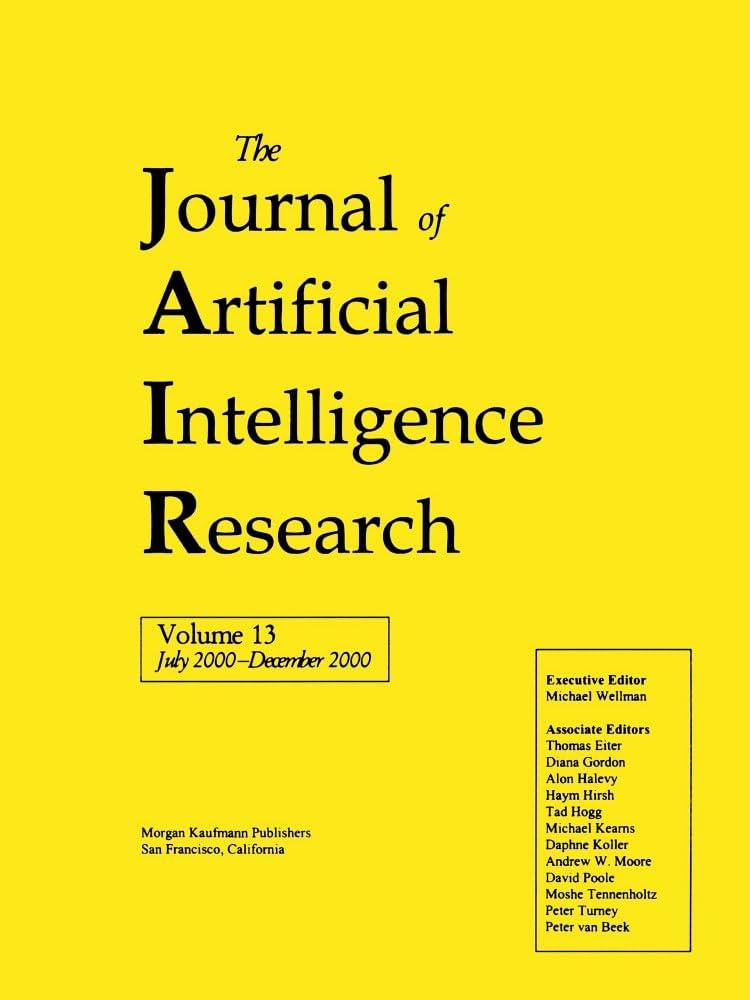Fair and Efficient Allocation of Scarce Resources Based on Predicted Outcomes: Implications for Homeless Service Delivery
IF 4
3区 计算机科学
Q2 COMPUTER SCIENCE, ARTIFICIAL INTELLIGENCE
引用次数: 3
Abstract
Artificial intelligence, machine learning, and algorithmic techniques in general, provide two crucial abilities with the potential to improve decision-making in the context of allocation of scarce societal resources. They have the ability to flexibly and accurately model treatment response at the individual level, potentially allowing us to better match available resources to individuals. In addition, they have the ability to reason simultaneously about the effects of matching sets of scarce resources to populations of individuals. In this work, we leverage these abilities to study algorithmic allocation of scarce societal resources in the context of homelessness. In communities throughout the United States, there is constant demand for an array of homeless services intended to address different levels of need. Allocations of housing services must match households to appropriate services that continuously fluctuate in availability, while inefficiencies in allocation could “waste” scarce resources as households will remain in-need and re-enter the homeless system, increasing the overall demand for homeless services. This complex allocation problem introduces novel technical and ethical challenges. Using administrative data from a regional homeless system, we formulate the problem of “optimal” allocation of resources given data on households with need for homeless services. The optimization problem aims to allocate available resources such that predicted probabilities of household re-entry are minimized. The key element of this work is its use of a counterfactual prediction approach that predicts household probabilities of re-entry into homeless services if assigned to each service. Through these counterfactual predictions, we find that this approach has the potential to improve the efficiency of the homeless system by reducing re-entry, and, therefore, system-wide demand. However, efficiency comes with trade-offs - a significant fraction of households are assigned to services that increase probability of re-entry. To address this issue as well as the inherent fairness considerations present in any context where there are insufficient resources to meet demand, we discuss the efficiency, equity, and fairness issues that arise in our work and consider potential implications for homeless policies.基于预测结果的稀缺资源的公平和有效分配:对无家可归者服务提供的影响
总的来说,人工智能、机器学习和算法技术提供了两种关键的能力,它们有可能改善稀缺社会资源分配背景下的决策。他们有能力灵活准确地在个体层面上模拟治疗反应,这可能使我们更好地将现有资源与个体相匹配。此外,他们有能力同时推断出稀缺资源对个体群体的匹配效应。在这项工作中,我们利用这些能力来研究在无家可归的背景下稀缺社会资源的算法分配。在美国各地的社区中,不断有对一系列无家可归者服务的需求,这些服务旨在解决不同层次的需求。住房服务的分配必须使家庭与可用性不断波动的适当服务相匹配,而分配效率低下可能会"浪费"稀缺资源,因为家庭将继续处于需要状态并重新进入无家可归者系统,从而增加对无家可归者服务的总体需求。这个复杂的分配问题带来了新的技术和伦理挑战。利用来自一个地区无家可归者系统的行政数据,我们在给定需要无家可归者服务的家庭数据的情况下,制定了资源的“最佳”分配问题。优化问题的目的是分配可用资源,使预测的家庭重新进入的概率最小化。这项工作的关键要素是它使用了一种反事实预测方法,如果分配到每个服务,该方法可以预测家庭重新进入无家可归者服务的概率。通过这些反事实的预测,我们发现这种方法有可能通过减少重新进入来提高无家可归者系统的效率,从而降低整个系统的需求。然而,效率是有代价的——很大一部分家庭被分配到增加重返社会可能性的服务中。为了解决这个问题,以及在资源不足以满足需求的任何情况下存在的固有公平考虑,我们讨论了工作中出现的效率、公平和公平问题,并考虑了对无家可归者政策的潜在影响。
本文章由计算机程序翻译,如有差异,请以英文原文为准。
求助全文
约1分钟内获得全文
求助全文
来源期刊

Journal of Artificial Intelligence Research
工程技术-计算机:人工智能
CiteScore
9.60
自引率
4.00%
发文量
98
审稿时长
4 months
期刊介绍:
JAIR(ISSN 1076 - 9757) covers all areas of artificial intelligence (AI), publishing refereed research articles, survey articles, and technical notes. Established in 1993 as one of the first electronic scientific journals, JAIR is indexed by INSPEC, Science Citation Index, and MathSciNet. JAIR reviews papers within approximately three months of submission and publishes accepted articles on the internet immediately upon receiving the final versions. JAIR articles are published for free distribution on the internet by the AI Access Foundation, and for purchase in bound volumes by AAAI Press.
 求助内容:
求助内容: 应助结果提醒方式:
应助结果提醒方式:


